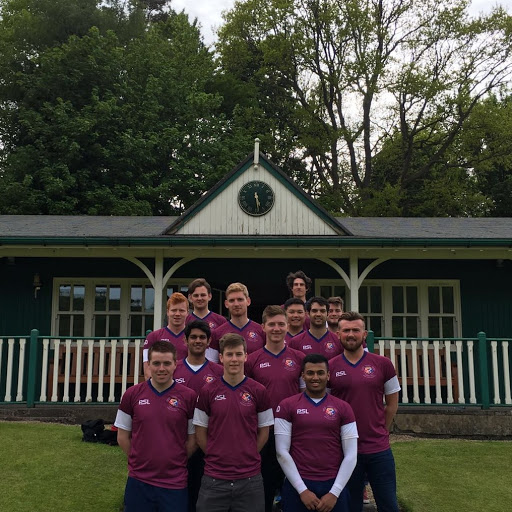Brendan N Hall
age ~56
from Eden Prairie, MN
- Also known as:
-
- Brenda N Hall
- Brandon A Hall
- Branden Hall
Brendan Hall Phones & Addresses
- Eden Prairie, MN
- Tucson, AZ
- Rockford, IL
- Rio Rancho, NM
- Hopkins, MN
- Fairview, OR
Wikipedia References

Brendan Hall
Vehicle Records
-
Brendan Hall
view source -
Address:8767 Deer Path, Eden Prairie, MN 55344
-
VIN:2D8HN54179R539126
-
Make:DODGE
-
Model:GRAND CARAVAN
-
Year:2009
Us Patents
-
Self-Checking Pair On A Braided Ring Network
view source -
US Patent:7372859, May 13, 2008
-
Filed:Dec 10, 2004
-
Appl. No.:11/010249
-
Inventors:Brendan Hall - Eden Prairie MN, US
Kevin R. Driscoll - Maple Grove MN, US
Michael Paulitsch - Columbia Heights MN, US -
Assignee:Honeywell International Inc. - Morristown NJ
-
International Classification:H04L 12/28
H04Q 7/20
G06F 15/16 -
US Classification:370400, 370258, 370407, 370447, 455453, 709225
-
Abstract:In one embodiment, one or more self checking pairs are implemented at the application layer in a network that supports the qualified propagation of data at the transport layer (for example, in a network having a braided ring topology).
-
Directional Integrity Enforcement In A Bi-Directional Braided Ring Network
view source -
US Patent:7502334, Mar 10, 2009
-
Filed:Nov 19, 2004
-
Appl. No.:10/993932
-
Inventors:Brendan Hall - Eden Prairie MN, US
Kevin R. Driscoll - Maple Grove MN, US
Michael Paulitsch - Columbia Heights MN, US -
Assignee:Honeywell International Inc. - Morristown NJ
-
International Classification:H04L 12/28
H04J 3/00 -
US Classification:370258, 370404, 370498
-
Abstract:In one embodiment, a node comprises an interface to communicatively couple the node to a channel. The channel communicatively couples the node to a first neighbor node and first neighbor's neighbor node in a first direction. When the first neighbor node is scheduled to transmit and the node receives data from the first neighbor node via the channel, the node forwards the data to the first neighbor's neighbor, receives other data from the first neighbor's neighbor, compares the data to the other data, and relays the data along the channel with information indicative of the comparison.
-
Clique Aggregation In Tdma Networks
view source -
US Patent:7505470, Mar 17, 2009
-
Filed:Nov 19, 2004
-
Appl. No.:10/994209
-
Inventors:Brendan Hall - Eden Prairie MN, US
Kevin R. Driscoll - Maple Grove MN, US -
Assignee:Honeywell International Inc. - Morristown NJ
-
International Classification:H04L 12/28
-
US Classification:370400, 370389
-
Abstract:In one embodiment, a method resolves cliques formed in a network comprising a plurality of nodes that are communicatively coupled to one another over at least a first channel. The method comprises, at each node, wherein that node is a member of a current clique: listening asynchronously for data on the first channel from a first neighbor's neighbor node of that node. The method further comprises, at that node, when a first valid frame is received on the first channel from the first neighbor's neighbor node of that node, listening asynchronously for a second valid frame on the first channel from a first neighbor node of that node. The method further comprises, at that node, when the second valid frame is received on the first channel, checking if the first valid frame and the second valid frame are both from the same other clique, and, if the first valid frame and the second valid frame are both from the same the same other clique, determining if that node should defect from the current clique towards the other clique.
-
Clock-State Correction And/Or Clock-Rate Correction Using Relative Drift-Rate Measurements
view source -
US Patent:7596153, Sep 29, 2009
-
Filed:Oct 13, 2006
-
Appl. No.:11/549457
-
Inventors:Michael Paulitsch - Columbia Heights MN, US
Brendan Hall - Eden Prairie MN, US
Kevin R. Driscoll - Maple Grove MN, US -
Assignee:Honeywell International Inc. - Morristown NJ
-
International Classification:H04L 3/06
-
US Classification:370503, 370345
-
Abstract:In one embodiment, a method is performed at a node. The method comprises outputting, from a rate-changeable clock included at the node, a first clock signal having a clock rate. The method further comprises generating a second clock signal from the first clock signal for use in determining when transmissions in a network are to start. The method further comprises sending and receiving data from the node using the first clock signal as a line encoding/decoding clock. The method further comprises making relative clock-rate measurements at the node based on transmissions received at the node and using the relative clock-rate measurements to adjust the clock rate of the rate-changeable clock. The method further comprises making clock-state adjustments to the second clock signal.
-
High Integrity Data Propagation In A Braided Ring
view source -
US Patent:7606179, Oct 20, 2009
-
Filed:Nov 19, 2004
-
Appl. No.:10/993933
-
Inventors:Brendan Hall - Eden Prairie MN, US
Kevin Driscoll - Maple Grove MN, US
Michael Paulitsch - St. Anthony MN, US -
Assignee:Honeywell International, Inc. - Morristown NJ
-
International Classification:H04L 12/28
-
US Classification:370258, 370404, 370498
-
Abstract:In one embodiment, a node comprises an interface to communicatively couple the node to a channel. The channel communicatively couples the node to a first neighbor node and a first neighbor's neighbor node in a first direction. When the node relays relayed data along the channel, the node compares data received from the first neighbor node with data received from the first neighbor's neighbor node. The relayed data comprises: at least one of: the data received from the first neighbor node and the data received from the first neighbor's neighbor node; and information indicative of the results of the comparison.
-
Asynchronous Hub
view source -
US Patent:7630390, Dec 8, 2009
-
Filed:Nov 19, 2004
-
Appl. No.:10/993911
-
Inventors:Philip J. Zumsteg - Shorewood MN, US
Kevin R. Driscoll - Maple Grove MN, US
Brendan Hall - Eden Prairie MN, US -
Assignee:Honeywell International Inc. - Morristown NJ
-
International Classification:H04L 12/28
H04B 7/212
H04L 12/413
H04L 12/43
H04J 3/02 -
US Classification:370425, 370444, 370447, 370461, 370462
-
Abstract:A method for arbitrating access to a time slot in a time division multiple access network in an asynchronous hub with a bus guardian is provided. The method including receiving signals from competing nodes claiming access to the same time slot at the bus guardian of the asynchronous hub, selecting one of the nodes based on a priority scheme, and relaying a message from the selected node and blocking the message from the non-selected node.
-
Unsynchronous Mode Brother's Keeper Bus Guardian For A Ring Networks
view source -
US Patent:7649835, Jan 19, 2010
-
Filed:Nov 19, 2004
-
Appl. No.:10/993931
-
Inventors:Brendan Hall - Eden Prairie MN, US
Kevin R. Driscoll - Maple Grove MN, US
Michael Paulitsch - Columbia Heights MN, US -
Assignee:Honeywell International Inc. - Morristown NJ
-
International Classification:G01R 31/08
-
US Classification:370216, 370404
-
Abstract:In one embodiment, a node comprises an interface to communicatively couple the node to a first channel. The first channel communicatively couples the node to a first neighbor node and a first neighbor's neighbor node in a first direction. When the node is operating in an unsynchronized mode: the node relays, along the first channel, for a relay period, data received from the first neighbor node that was sourced from that first neighbor node and, after relaying the data received from the first neighbor node that was sourced from that first neighbor node and for a block period, the node blocks data received from the first neighbor while the node relays, along the first channel, data received from the first neighbor's neighbor node.
-
Methods For Expedited Start-Up And Clique Aggregation Using Self-Checking Node Pairs On A Ring Network
view source -
US Patent:7656881, Feb 2, 2010
-
Filed:Dec 13, 2006
-
Appl. No.:11/610450
-
Inventors:Brendan Hall - Eden Prairie MN, US
Michael Paulitsch - Columbia Heights MN, US
Kevin R. Driscoll - Maple Grove MN, US -
Assignee:Honeywell International Inc. - Morristown NJ
-
International Classification:H04L 12/28
-
US Classification:37039532
-
Abstract:In one embodiment, a system comprises a plurality of nodes that are communicatively coupled to one another. Each of the plurality of nodes, in the absence of any faults, is communicatively coupled to at least a first neighbor node and a first neighbor's neighbor node and a second neighbor node and a second neighbor's neighbor node. When at least a first clique and a second clique exist within the plurality of nodes and a first node included in the first clique successfully receives a synchronization message associated with the second clique from the first neighbor node of the first node and the first neighbor's neighbor node of the first node, the first node does the following. The first node defects to the second clique and synchronizes to the synchronization message. The first node also communicates a join message to at least the second neighbor node of the first node and the second neighbor's neighbor node of the first node. The join message indicates that the second neighbor node and the second neighbor's neighbor node should defect to the second clique and listen for a subsequent synchronization message from the second clique to which the second neighbor node and the second neighbor's neighbor node should synchronize.
Resumes

Engineer Fellow
view sourceLocation:
6504 Nagoya Rd northeast, Rio Rancho, NM 87144
Industry:
Electrical/Electronic Manufacturing
Work:
Honeywell
Engineer Fellow
Honeywell 1998 - Mar 2001
Principal Software Engineer
Motorola Sep 1994 - Jan 1998
Senior S and W and Test Engineer
Bae Systems 1989 - 1993
Engineer
Engineer Fellow
Honeywell 1998 - Mar 2001
Principal Software Engineer
Motorola Sep 1994 - Jan 1998
Senior S and W and Test Engineer
Bae Systems 1989 - 1993
Engineer
Education:
University of Hertfordshire 1992 - 1993
University of Reading 1989 - 1991
Bachelor of Engineering, Bachelors, Engineering
University of Reading 1989 - 1991
Bachelor of Engineering, Bachelors, Engineering
Skills:
Embedded Systems
Systems Engineering
Testing
Aerospace
Embedded Software
System Architecture
Avionics
Simulations
Engineering Management
Software Engineering
Rtos
System Design
Do 178B
Systems Design
Requirements Management
Integration
Earned Value Management
Simulink
Six Sigma
C++
C
Sensors
Hardware Architecture
Requirements Analysis
Python
Software Design
Software Development
Electrical Engineering
Clearcase
Fpga
Configuration Management
Matlab
Space Systems
Automation
Real Time Operating Systems
Algorithms
Signal Processing
Spacecraft
Digital Signal Processors
Firmware
Systems Engineering
Testing
Aerospace
Embedded Software
System Architecture
Avionics
Simulations
Engineering Management
Software Engineering
Rtos
System Design
Do 178B
Systems Design
Requirements Management
Integration
Earned Value Management
Simulink
Six Sigma
C++
C
Sensors
Hardware Architecture
Requirements Analysis
Python
Software Design
Software Development
Electrical Engineering
Clearcase
Fpga
Configuration Management
Matlab
Space Systems
Automation
Real Time Operating Systems
Algorithms
Signal Processing
Spacecraft
Digital Signal Processors
Firmware
Certifications:
Scrum Master Certification

Brendan Hall
view source
Brendan Hall
view sourceLocation:
United States
Name / Title
Company / Classification
Phones & Addresses
BBK ENTERPRISE, LLC
Flickr
Classmates

Brendan Hall
view sourceSchools:
Mann Elementary School Niagara Falls NY 1995-1999
Community:
Lance Rosenthal

Brendan Hall
view sourceSchools:
St. Anthony School Hawthorne NJ 2000-2004
Community:
Joseph Mcdonald, James Pastras, Maria Overbaugh, Crystal Brito, Jake Gaechter, Billy Pascrell, Amanda Salazar, Liz Clyne, Jen Genks, Christian Diienno, Joe Hall

Brendan Hall
view sourceSchools:
Thompson Junior High School Oswego IL 2005-2009
Community:
Sebastian Aguilar, Devontae Turner, Patrick Tu, Andrew Martinez, Andrew Dawson, Sergio Aguilar, Anthony Matozzi, Cody Reusch, Kenny Papke, Abby Marie, Walter Williams

St. Anthony School, Hawth...
view sourceGraduates:
Philip De Fino (1951-1955),
Brendan Hall (2000-2004),
Leonard Dorigatti (1951-1965),
Diane Peck (1971-1975)
Brendan Hall (2000-2004),
Leonard Dorigatti (1951-1965),
Diane Peck (1971-1975)

Bishop Luers High School,...
view sourceGraduates:
Brendan Hall (1960-1964),
Bryan Marquart (1973-1977),
Paula Carr (1959-1963),
Cheryl Lauer (1973-1977),
Katherine Loving (2000-2004)
Bryan Marquart (1973-1977),
Paula Carr (1959-1963),
Cheryl Lauer (1973-1977),
Katherine Loving (2000-2004)

Valier High School, Valie...
view sourceGraduates:
Brendan Hall (2000-2004),
Deborah Rideout (1966-1970),
Niche Wellman (1994-1998),
Gina Offerdahl (1990-1994)
Deborah Rideout (1966-1970),
Niche Wellman (1994-1998),
Gina Offerdahl (1990-1994)

Brendan Sommerfeld Hall
view source
Brendan Caleb Hall
view source
Brendan Hall
view source
Brendan Bobby Hall
view source
Brendan Hall
view source
Brendan Hall
view source
Brendan Ftb Hall
view source
Brendan Hall
view sourceYoutube
Googleplus

Brendan Hall
Education:
East Carolina University - Operations & Supply Chain Management

Brendan Hall

Brendan Hall

Brendan Hall

Brendan Hall

Brendan Hall

Brendan Hall

Brendan Hall
Myspace
Get Report for Brendan N Hall from Eden Prairie, MN, age ~56

















